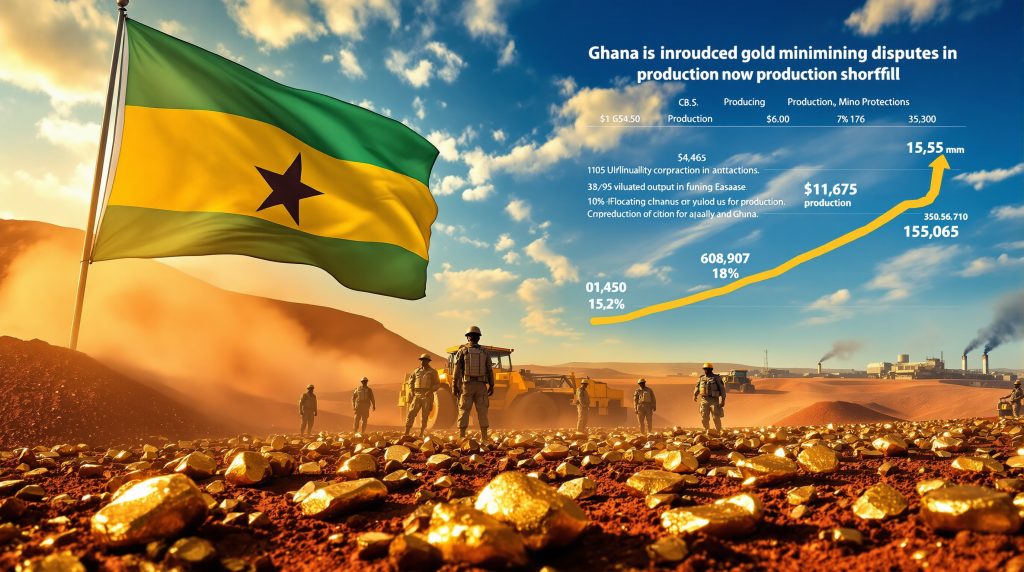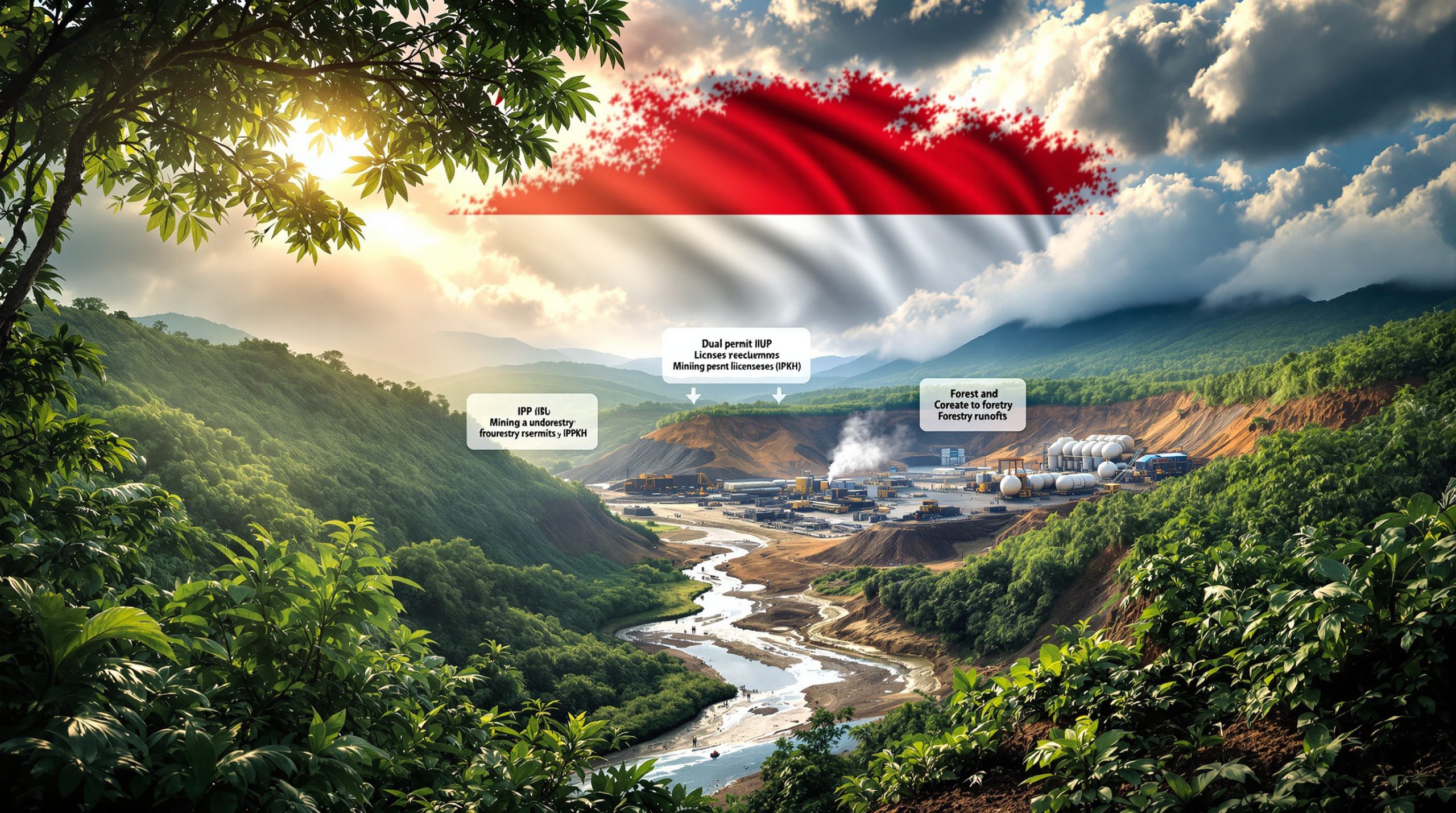Why Has Galiano Gold Suspended Operations at Ghana's Esaase Pit?
The mining industry evolution in Ghana faced a significant disruption recently when Galiano Gold announced a temporary halt to operations at its Esaase pit. On September 10, 2025, the Canadian mining company suspended activities at this critical site following a serious confrontation between local community members and military personnel stationed on the company's mining concessions in Ghana's Amansie South District. While the Esaase pit operations have been paused, the company confirmed that work continues at the nearby Abore pit and processing plant, allowing partial production to continue during the investigation.
This incident highlights the complex relationship between mining operations, security forces, and local communities in resource-rich regions of Ghana. The confrontation resulted in equipment damage and has raised important questions about community relations at this significant gold mining site.
Understanding the Community-Military Confrontation in Ghana
The suspension follows what Galiano Gold described as a "confrontation between community members and military personnel" on its operating concessions. While specific details of the incident remain under investigation, tensions escalated to a point where the company determined operations could not safely continue at the Esaase pit.
The Amansie South District, where the Asanko Gold Mine is located, has historically been an area where traditional land use practices sometimes conflict with commercial mining interests. These tensions can become particularly pronounced when security forces are involved in protecting mining assets.
The timing of this incident is particularly significant, as the Esaase pit had only resumed operations earlier in 2025 after a period of inactivity. This recent restart was intended to drive Galiano's ambitious production growth for the year.
What Triggered the Security Situation at Esaase?
Military presence at mining sites across Ghana is not uncommon and typically stems from government-sanctioned security arrangements. The Ghana Ministry of Lands and Natural Resources, in collaboration with the Ghana Chamber of Mines, has deployed security personnel to various mining regions as part of broader initiatives to:
- Combat illegal small-scale mining (locally known as "galamsey")
- Protect legitimate mining concessions from encroachment
- Enforce environmental regulations
- Maintain order in areas where resource competition exists
This security framework, while intended to safeguard authorized mining operations, can create friction points between local communities, security personnel, and mining companies.
In Ghana's gold-rich regions, security forces often patrol mining concessions to prevent unauthorized mining activities. However, these arrangements can become contentious when local communities perceive their traditional land use rights as being restricted or when there are disagreements about the benefits flowing to local stakeholders from mining operations.
How Will This Affect Galiano Gold's Production Targets?
The suspension at Esaase creates significant uncertainty for Galiano Gold's 2025 production goals. Prior to this incident, the company had projected substantial growth in its gold output for the year.
| Production Metric | 2024 (Actual) | 2025 (Forecast) | Current Status |
|---|---|---|---|
| Annual Gold Output | 115,115 oz | 130,000-150,000 oz | Under review |
| H1 2025 Production | 51,084 oz | – | Completed |
| Year-over-Year Growth | – | 13-30% projected | Uncertain |
The Esaase pit was positioned to be the primary driver of this projected 13-30% increase in gold production. With operations now suspended indefinitely, these targets face significant risk unless the situation can be resolved quickly.
Despite these challenges, Galiano has not yet revised its annual production guidance, suggesting the company may have contingency plans to address shortfalls or anticipates a relatively swift resolution to the current situation.
Which Operations Remain Active at Asanko Gold Mine?
While the Esaase pit operations have been suspended, Galiano Gold confirmed that other key components of the Asanko Gold Mine complex continue to function normally:
- The Abore pit remains operational with mining activities continuing
- The processing plant continues to function, processing ore from the Abore pit
- Support facilities and administrative functions remain active
This selective operational approach allows Galiano to maintain some production capacity while addressing the specific issues at the Esaase site. The company's ability to continue processing operations suggests that at least in the short term, there is sufficient ore from Abore to keep the processing facilities running.
However, the longer-term sustainability of this arrangement will depend on the ore grades at Abore and whether this single source can support efficient processing operations at the plant.
What's the Ownership Structure Behind Asanko Gold Mine?
The Asanko Gold Mine operates under a complex ownership structure that adds additional layers to the current situation:
- Galiano Gold: 90% operating stake
- Government of Ghana: 10% carried interest
This ownership arrangement means that production disruptions affect not only Galiano's bottom line but also government revenues and, by extension, potential benefits to local communities. The structure also creates a framework where multiple stakeholders have interests in resolving the current situation.
Ghana's 10% carried interest is part of the country's mining regulations, which ensure the government maintains a stake in mining operations as a representative of the nation's interests. This arrangement also means that government authorities have a direct financial incentive to help resolve the current impasse quickly.
How Is Galiano Responding to the Situation?
Galiano Gold has implemented a multi-faceted response strategy to address the current challenges at Esaase:
-
Investigation Support: The company is cooperating with local authorities to investigate the incident and identify root causes of the confrontation.
-
Security Assessment: A comprehensive review of security protocols and arrangements is likely underway to determine appropriate adjustments.
-
Stakeholder Engagement: Dialogue with community leaders, government officials, and security agencies has been initiated to build a path toward resolution.
-
Operational Adjustments: While maintaining production at unaffected areas, the company has secured equipment and facilities at Esaase to prevent further damage.
-
Investor Communication: The company has provided transparent updates about the situation while being careful not to speculate on outcomes before investigations are complete.
According to reports from African Mining Market, "The Company will provide further updates once investigations are complete," indicating a measured approach to public communications during this sensitive period.
What Does This Mean for Ghana's Gold Mining Sector?
The incident at Esaase reflects broader challenges facing Ghana's gold mining sector:
Social License Challenges
Mining companies increasingly face scrutiny over their community engagement practices and benefit-sharing arrangements. The concept of "social license to operate" has become a critical factor in mining success, requiring companies to maintain positive relationships with local communities beyond mere legal compliance.
Security Dilemmas
The deployment of military personnel to protect mining assets creates complex dynamics that can either enhance security or exacerbate tensions, depending on how these forces interact with local populations. Finding the right balance between protecting valuable assets and respecting community interests remains an ongoing challenge.
Production Uncertainty
Operational disruptions due to community conflicts create unpredictability in production forecasts, affecting investor confidence in Ghana's mining sector. Companies operating in the region may face increased pressure to develop more robust community relations strategies.
Regulatory Responses
Incidents like this often trigger government interventions and policy adjustments aimed at balancing mining development with community interests. Ghana's Ministry of Lands and Natural Resources may review current policies regarding security arrangements at mining sites.
When Might Operations Resume at Esaase?
The timeline for resuming operations at Esaase depends on several critical factors:
Investigation Completion
Thorough investigation of the incident, including identification of underlying causes and responsible parties, must be completed before normal operations can resume.
Security Reassessment
New security protocols or arrangements may need to be implemented to prevent similar incidents in the future.
Community Engagement
Successful dialogue with community stakeholders will be essential to rebuilding trust and creating conditions where operations can safely resume.
Regulatory Clearance
Government authorities will likely need to approve any restart plans, particularly if the incident raises broader policy questions about mining security.
Similar incidents at other Ghanaian mines have resulted in suspensions lasting anywhere from a few weeks to several months, depending on the severity of the situation and the complexity of underlying issues.
How Important Is Esaase to Ghana's Gold Output?
The Asanko Gold Mine, of which Esaase is a critical component, plays a significant role in Ghana's gold production landscape:
- Ghana is Africa's largest gold producer, with annual output exceeding 4 million ounces
- Asanko's projected 130,000-150,000 ounces for 2025 represents an important contribution to national output
- The mine employs approximately 2,200 workers, with the majority being Ghanaian nationals
- Local communities benefit from various development initiatives funded by mining operations
The suspension at Esaase, while not affecting Ghana's overall gold output dramatically in the short term, could have more significant implications if prolonged. Furthermore, gold market analysis suggests the timing is particularly unfortunate given recent all-time high gold prices analysis which could have significantly benefited the operation.
FAQs About the Galiano Gold Esaase Suspension
When did Galiano Gold suspend operations at the Esaase pit?
Galiano Gold announced the suspension of operations at the Esaase pit on September 10, 2025, following a confrontation between community members and military personnel on the company's concessions in Ghana's Amansie South District.
Is the entire Asanko Gold Mine closed?
No, only the Esaase pit operations have been suspended. The Abore pit and processing plant continue to operate normally, allowing Galiano to maintain partial production capacity during the investigation.
How might this affect Galiano Gold's annual production?
While Galiano has not revised its 2025 production guidance of 130,000-150,000 ounces, the suspension at Esaase could potentially impact these targets depending on the duration of the disruption and the pit's contribution to overall production.
What is the ownership structure of the Asanko Gold Mine?
Galiano Gold holds a 90% operating stake in the Asanko Gold Mine, while the Government of Ghana maintains a 10% carried interest in the operation.
Why were military personnel present at the mining site?
Military personnel are often deployed to mining concessions in Ghana as part of government-sanctioned security arrangements aimed at protecting legitimate mining operations and preventing illegal mining activities. These arrangements are typically coordinated through the Ghana Chamber of Mines and the Ministry of Lands and Natural Resources.
How common are community conflicts at mining sites in Ghana?
Community-mining conflicts occur periodically across Ghana's mining regions, often stemming from disputes over land use, environmental impacts, benefit-sharing arrangements, or interactions with security forces. Similar incidents have occurred at other mining operations in the country.
What steps might be required before operations can resume?
Before operations can resume at Esaase, several steps will likely be necessary, including completion of investigations, implementation of revised security protocols, successful community engagement efforts, and regulatory approvals.
The Broader Context of Mining-Community Relations in Ghana
The incident at Esaase reflects longstanding challenges in Ghana's mining sector regarding community relations. Mining operations in gold-rich regions have historically navigated complex issues including:
- Land use disputes between traditional landowners and mining companies
- Disagreements over compensation for displaced farmers and residents
- Environmental concerns regarding water pollution and land degradation
- Competition between artisanal miners and large-scale commercial operations
- Expectations gaps between communities and mining companies regarding development benefits
Successfully addressing these challenges requires mining companies to go beyond minimum legal requirements and develop comprehensive community engagement strategies that acknowledge local concerns and create meaningful benefit-sharing arrangements.
For Galiano Gold and other mining operators in Ghana, the path forward will likely involve deeper community engagement, more transparent benefit-sharing, and careful coordination with security forces to ensure that protection of mining assets does not come at the expense of community relations. According to Mining Weekly, mining companies across the region are increasingly adopting similar approaches as gold miners' perspectives evolve on social license issues.
This incident follows a pattern seen across the industry, with other operators like Paladin Energy halting uranium mining in Namibia due to different but similarly complex circumstances, highlighting the increasing importance of stakeholder management in modern mining operations.
Ready to Stay Ahead of Major Mineral Discoveries?
Receive instant alerts on significant ASX mineral discoveries through Discovery Alert's proprietary Discovery IQ model, turning complex data into actionable investment insights. Explore why these discoveries can generate substantial returns by visiting Discovery Alert's dedicated discoveries page and begin your 30-day free trial today.




